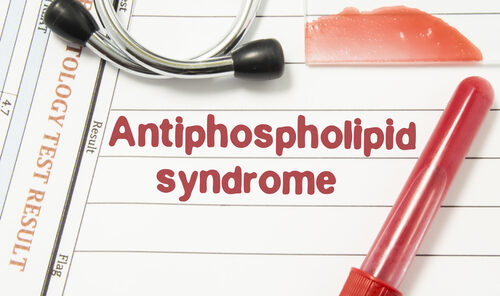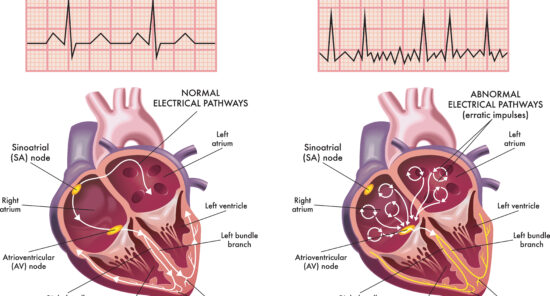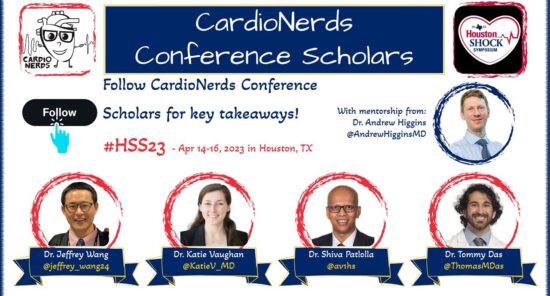Credit: Original article published here.In part two of an informative discussion, DocWire News partner Dr. Hady Lichaa continues his discussion with Dr. Matthew Bunte, a world-renowned expert on vascular and cardiac interventions. The topic at hand is deep venous arterialization (DVA), which is a technique that provides a limb-saving option for patients with chronic limb-threatening ischemia. In part one, Dr. Bunte broke down the technical nuances of the procedure. Here, Dr. Bunte details the clinical aspects of DVA procedures, recommendations he gives his patients post-DVA, what percentage of limbs are saved due to DVA, and much more. Dr. Hady Lichaa: So now, getting out of the technical aspect to the kind of program development aspect, tell us how you started. Who are the players in your program? And how do you collaborate? And how do you…? Let’s start with that. Dr. Matthew Bunte: Yeah. As a cardiologist, I have really come to appreciate how important it is to thinking about these patients almost like a transplant patient. I’m thinking about my heart failure colleagues and how there are many different clinical aspects to the case that lead you to offering these really complex solutions. But also, there’s that psychosocial dynamic,
Credit: Original article published here.A recent publication in JAMA Network Open explores two clinical questions related to antiphospholipid antibodies (aPL): (1) what is the prevalence of aPL positivity at a single time point, and (2) are aPL antibodies associated with future atherosclerotic cardiovascular disease (ASCVD) risk? [1]. Antiphospholipid syndrome (APS) is an acquired condition that is characterized by a thromboinflammatory state, with arterial or venous thrombotic events and/or obstetric complications, in the presence of persistently circulating aPL antibodies. Arterial thrombotic events in APS include stroke or myocardial infarction (MI). With a recent study suggesting autoantibodies can be present in up to 18-32% of individuals [2], the authors of this study postulated whether presence of these autoantibodies may put individuals at higher risk for ASCVD morbidity than is currently recognized. Previous studies have demonstrated aPL are acutely present in up to 17.4% of patients with cardiovascular events such as stroke and transient ischemic attack, and some incidental positive aPL can be present in 1-12% of otherwise healthy individuals. Thus, this study sought to determine association of aPL and future ASCVD events and investigate association of sex, race, and ethnicity with aPL prevalence [1]. Zuo et al performed this population-based cohort study
Credit: Original article published here.There are no solutions, only tradeoffs. In acute myocardial infarction, we have tradeoffs between coronary supply and myocardial demand. In terms of supply, we have made significant progress by reducing ischemic time but see a plateau of benefit at 90 minutes. In terms of demand, we currently utilize pharmacotherapy which may be too little too late, especially in patients with large infarct size who have progressed to cardiogenic shock and cannot tolerate these therapies. We see these trends in the outcomes data. While advances in restoring supply have led to high short-term survival rates, long-term outcomes remain challenging due to the incidence of heart failure which reaches nearly 75% at 5 years (1). In-hospital mortality for cardiogenic shock remains abysmal despite advances in reperfusion. Thus, it is paramount that we find therapies capable of limiting infarct size without compromising systemic perfusion. Mechanical unloading is one option that has been shown to reduce infarct size in preclinical studies since the 1980s. Translating the efficacy of preclinical studies to effectiveness in the real world, however, remains a work in progress. The initial roadblock was inadequate technology. In 2008, the FDA approved the Impella, a percutaneous transaxial flow pump,
Credit: Original article published here.The implantable cardioverter defibrillator (ICD) is frequently utilized in patients with heart failure for primary and secondary prevention and treatment of unstable arrhythmias. This device is a unique medical intervention that may improve survival for select patients but does not necessarily improve quality of life and may even lead to detrimental impacts. At the 2023 Houston Shock Symposium, Dr. Haider Warraich – director of the heart failure program at VA Boston Healthcare, assistant professor at Brigham and Women’s Hospital and prolific author highlighted the psychological stress that can impact ICD recipients and the physician role in addressing these stressors with our patients. Psychological stressors can present in many ways in ICD recipients; ranging from feeling phantom shocks to avoiding engagements due to fear of shock and persistent hyper-vigilance. Identified risk factors for increased psychosocial distress in ICD recipients include younger age less than 50 years old, female gender, low social support, premorbid psychiatric diagnosis, and greater than 5 appropriate or inappropriate defibrillations.1 Dr. Warraich challenged healthcare providers at the Houston Shock Symposium to consider the physician role in empowering patients to shift their mindset after an ICD shock from victimhood thinking with poor coping skills to
Credit: Original article published here.According to a study, published in Frontiers in Cardiovascular Medicine, the functions of aging that increase risks of atrial fibrillation development and progression are not fully understood. Researchers performed a weighted gene co-expression network analysis to seek key modules and gene hubs associated with aging-related atrial fibrillation. The study’s lead author, Chuanbin Liu, reported the team identified 9 hub genes that may play central roles in the mechanisms of aging-related atrial fibrillation: PTGDS, COLQ, ASTN2, VASH1, RCAN1, AMIGO2, RBP1, MFAP4, and ALDH1A1. Of note, 6 of these genes were associated with atrial fibrillation for the first time in this study. Novel Genes of Interest in Aging-Related Atrial Fibrillation The authors conducted the weighted gene co-expression network analysis using the Gene Expression Omnibus atrial fibrillation dataset GSE2240, which included cardiac patients with atrial fibrillation or sinus rhythm. Researchers examined hub genes in clinical samples and verified their findings with Gene Ontology and Kyoto Encyclopedia of Genes and Genomes enrichment analyses. Reportedly, the green and pink modules were the most critical that had an association with atrial fibrillation. Within those, investigators flagged 9 hub genes with potentially significant roles in atrial fibrillation pathophysiology among elderly patients. Additionally, 7
Credit: Original article published here.CardioNerds correspondents Drs. Shiva Patiolla and Jeff Wang are covering The Houston Shock Symposium 2023. They are joined by the founder and director of the Houston Shock Symposium, Dr. Marwan Jumean, and Dr. Anju Bhardwaj, who currently serves as an assistant professor of medicine in the section of cardiology at the McGovern Medical School. The group discusses the theme of this year’s symposium, which is Breaking Boundaries, and will focus on the five areas of cardiogenic shock management, which are: Cardiac ICU, Cath Lab, Medical ICU, Operating Room, and Surgical ICU. See what these thought leaders had to say! Dr. Shiva Patiolla: Hello, everyone and thank you for joining us today. I am Shiva Patiolla. I’m a cardiology fellow at Baylor University Medical Center in Dallas, Texas, and a CardioNerds FIT Trialist. Dr. Jeff Wang: All right. Hi, everyone. My name is Jeff Wang, and I am a cardiology fellow at Emory University and a CardioNerds FIT Trialist as well. And we are really excited to serve as CardioNerds Conference Scholars for the 2023 Houston Shock Symposium with mentorship from Dr. Andrew Higgins. Dr. Shiva Patiolla: It is our great pleasure to be joined by the
Credit: Original article published here.DocWire News Medical Lead Dr. Payal Kohli reviewed the REDUCE-IT trial, which demonstrated that icosapent ethyl intervention twice daily is superior to placebo in reducing triglycerides (TGs), cardiovascular events, as well as CV mortality in patients with high TGs and either known CVD or individuals with known CVD or at high risk for developing it, and patients on statin therapy with relatively well-controlled LDL levels. The study was presented at the American College of Cardiology’s 72nd Annual Scientific Session Together with World Congress of Cardiology (ACC.23/WCC).
Credit: Original article published here.In this episode of Practice Tips, Dr. Hady Lichaa outlines the balloon puncture access technique, which is applicable to any situation where the operator is facing difficulty accessing a diseased or sclerosed vessel. The access is facilitated by the inflation of a balloon at the desired access location. The balloon is delivered from an alternative access site which is either too small for the delivery of the rest of the gear or too distant from the treatment zone. Hady Lichaa, MD, FACC, FSCAI, FSVM, RPVI, is an assistant professor of medicine at the University of Tennessee College of Medicine, and an interventional cardiologist specializing in complex coronary interventions. Dr. Lichaa is a content partner for DocWire News and contributes interventional content several times per month to DocWire News. Watch previous installments of this series: Using Ultrasound to Gain Vascular Access Simplifying Coronary Bifurcation Ulnar Artery Access and Occlusion Management Overcoming Arteria Lusoria The Buddy Wire Paradox Perforated Balloon No Reflow Catheter Telescoping Technique to Overcome Vessel Tortuosity Alternative Arterial Access in CLI Reversing Patient Cranial Caudal Position Optimal CO2 Imaging The Coronary Live IVUS Technique Antegrade Superficial Femoral Artery Access and Closure IVUS Guided Re-Entry The Importance of Identifying the Inguinal Ligament
Credit: Original article published here.According to a study, obstructive sleep apnea (OSA) is associated with increased incidences of atrial fibrillation and other adverse cardiovascular events. Researchers, led by Nitesh Sood, compared rivaroxaban and warfarin in patients with nonvalvular atrial fibrillation (NVAF) and concomitant OSA. The investigators found rivaroxaban showed a similar risk for stroke or systemic embolism (SSE) compared with warfarin; however, rivaroxaban was associated with fewer intra- and extracranial bleeding-related hospitalizations. The findings were published in TH Open. Additional Benefits With Rivaroxaban Versus Warfarin Researchers analyzed electronic health records total of 21940 patients on rivaroxaban and 38213 on warfarin from November 2010 to December 2021. All patients had NVAF and OSA and initiated first-time rivaroxaban or warfarin at enrollment. The primary end points were incidence of SSE and bleeding-related hospitalization. Rivaroxaban had a similar risk of SSE compared with warfarin (hazard ratio [HR], 0.92; 95% CI, 0.82-1.03) among patients with NVAF and OSA. Notably, rivaroxaban provided additional benefits with reductions in any bleeding-related hospitalizations (HR, 0.85; 95% CI, 0.78-0.92), intracranial bleeding (HR, 0.76; 95% CI, 0.62-0.94), and extracranial bleeding (HR, 0.89; 95% CI, 0.81-0.97). Authors conducted a sensitivity analysis on just patients with prespecified CHA2DS2VASc scores and estimated reductions
Credit: Original article published here.DocWire News Medical Lead Dr. Payal Kohli detailed The CLEAR Outcomes trial, which demonstrated that bempedoic acid improves cardiovascular outcomes and reduces “bad” cholesterol in patients with established atherosclerotic cardiovascular disease. The trial was presented at the American College of Cardiology’s 72nd Annual Scientific Session Together with World Congress of Cardiology (ACC.23/WCC).











